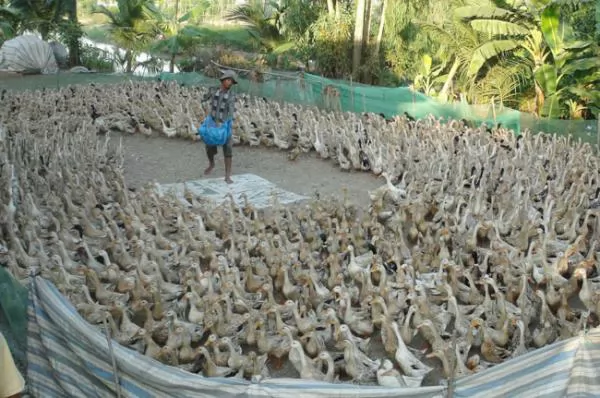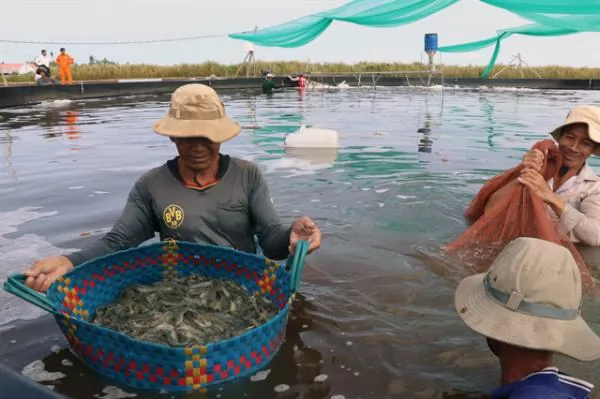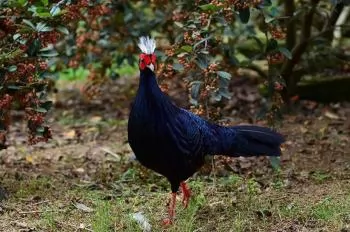[Last article]: Turn Hai Phong into a seafood processing centre
![[Last article]: Turn Hai Phong into a seafood processing centre [Last article]: Turn Hai Phong into a seafood processing centre](https://en.thuocthuydiemuyen.vn/upload/images/nam-2024/thang-01/20012024-133457-22488-a267e9e39612.webp)
Raising fish in cages on the river in Tien Lang. Photo: Dinh Muoi.
(VAN) To fully exploit the huge and rare potential, Hai Phong has re-planned the farming area and plans to become a key seafood processing centre.
Re-plan the farming area
Faced with the fact that the potential for developing aquaculture, exploitation and export of seafood is still high, Hai Phong City has specific strategies for development. The most recent move is probably the project and implementation plan for "Project for developing the seafood processing industry in the period 2021 - 2030"; Hai Phong aquaculture development plan for the period 2023 - 2030 has been issued.
According to Mr. Le Trung Kien - Director of Hai Phong Fisheries Department, to promote seafood exports, firstly, there needs to be a guaranteed and sustainable source of raw materials, followed by the development of a processing industry meeting international standards. In both areas, Hai Phong has specific implementation plans.Firstly, in the field of aquaculture development, according to the plan, Hai Phong sets a goal from 2023 - 2030 to maintain a stable farming area of 12,000 ha, of which the domestic farming area is 9,000 ha, the marine farming area (including coastal, tidal and inland) is 3,000 ha.
Regarding farming subjects, in freshwater areas, traditional fish with economic value such as black carp, grass carp, tilapia, red tilapia, and hybrid carp... will be raised through concentrated production in An Lao, Kien Thuy, Tien Lang, Vinh Bao and Thuy Nguyen districts.
Regarding seafood specialities, Hai Phong encourages raising new species and specialities such as loaches, Pila conica, softshell turtles,... ensuring compliance with the trend of production expansion, diversifying cultivation forms and farming objects, increasing competitiveness and consumer value.
In saline and brackish areas, according to the plan, Hai Phong will continue to develop effective farming of key species of black tiger shrimp and whiteleg shrimp. New farming technologies, and advanced production forms such as intensive farming, super-intensive farming, biotechnology, and circular farming,... will ensure disease safety and sustainability in the ecological environment, adapt to climate change, and ensure effective and sustainable development goals.
Regarding cage farming at sea, in particular, Hai Phong will develop fish farming in cages in the Cat Hai district with a total of 117 cages, and 42 mollusc farming platforms in the Ghe Gam - Gia Luan area. Simultaneously, the industrial sea farming model will be piloted in open, offshore areas, associated with protecting national security and island sovereignty in the Cat Ba and Bach Long Vi areas.

Re-planning of fish farming in cages in Cat Ba. Photo: Dinh Muoi.
To ensure quality, food safety and traceability in aquaculture, Hai Phong strengthens quality control and food safety measures from inputs of production activities such as breeds and materials production to the preliminary processing, general processing and preserving post-harvest of aquatic products. These measures will help to ensure prescribed standards.
On the other hand, seafood processing will be reorganized according to the value chain, the province will enact traceability on products and associate seafood processing and consumption with aquaculture areas. Simultaneously, the province will also promote investment attraction, resources and market expansion, improve quality and diversify processed products.
“Hai Phong's goal is to develop an effective and sustainable aquaculture, and proactively adapt to climate change. Consequently, helping to improve productivity, quality, value and competitiveness of products originating from aquaculture, meeting the needs of domestic and export consumers, promoting economic development, and ensuring social security", Mr. Kien said.
Prioritize the development of seafood processing
Hai Phong City has set goals and has begun implementing related work to become home to a key seafood processing industry in the country, qualifying to serve domestic and export needs in the near future.

In the near future, 100% of aquaculture facilities in Hai Phong will have to have a certificate of food safety eligibility according to the regulations of the Ministry of Agriculture and Rural Development. Photo: Dinh Muoi.
Mr Le Trung Kien affirmed that this goal is set by Hai Phong City People's Committee in the implementation plan “Project for developing the seafood processing industry in the period 2021 - 2030”.
According to this plan, Hai Phong strives to increase export turnover by 4-5 %/year by 2030 and will become a key seafood processing centre in the country. There will be over 70% of export seafood processing establishments meet qualifications, average to advanced production technology capacity, and modern seafood processing enterprises with economic potential and a world-class management level.
To realize this goal, in the coming time, Hai Phong will take specific steps to develop the seafood processing and preserving industry on a large scale, ensuring modernity, efficiency and sustainability according to criteria, meeting the needs and regulations of the consumer market.
Additionally, there needs to be policies and mechanisms to encourage economic sectors to invest in standard processing facilities, ensure food hygiene and safety, improve quality, and diversify processed products to meet domestic and export market needs.
Simultaneously, the province must form value chains and production links from farming and exploiting to product processing, promoting the in-depth application and development of export processing technology, innovating production lines, equipment, advanced and modern processing technology, improving designs, packaging,... meeting the requirements of domestic and export markets.

Viet Truong is a large unit in Hai Phong operating in the field of seafood processing for export. Photo: Dinh Muoi.
In developing export markets, Hai Phong needs to prioritize construction and promote the brand of frozen and dried seafood product groups and fish sauce. These product segments are the city's main product. The province also needs to maintain and develop major and traditional markets such as EU countries, Northeast Asian countries, America, China, and ASEAN... focusing on trade promotion resources and expanding into other potential markets.
Moreover, it is necessary to regularly update information about the trade policies of countries and each market in terms of market share, tastes, prices, product quality standards, technical barriers, tariffs... As a consequence, information is provided to seafood processing enterprises as a basis for development orientation.
Author: Dinh Muoi
Translated by Hoang Duy
Maybe you are interested

Duck farmers adapt in Dong Thap
DONG THAP (VNS)— At the age of 16, Le Ngoc Moi from My Hao Commune, Dong Thap Province began his career as a free-range duck farmer. Traditionally, in the Cuu Long (Mekong) Delta area, duck farmers walked their herds from commune to commune to feed the ducks with weeds from...

International efforts help preserve Vietnam pheasant
Belgium's Antwerp Zoo will contribute two young birds and conduct genetic research to ensure the released population maintains healthy diversity.

Kiên Giang Province increases shrimp farming
Kiên Giang Province plans to produce more shrimp using advanced techniques to enhance yield and quality this year.





